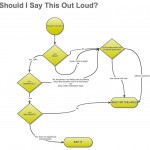In case you missed the Mayweather vs. Ortiz fight, here is a quick recap as HBO has shutdown any youtube recounts.
- In round 4, Ortiz headbutts Mayweather. Looked highly intentional.
- Referee stops fight and deducts point from Ortiz.
- Ortiz tells Mayweather he is sorry and gives him a man hug.
- The fighters separate and Ortiz unwisely looks to referee, dropping his gaurd while Mayweather is closing on him.
- With eyes still poised on the Ref, Ortiz receives two crushing blows from Mayweather, knocking him out.
- Immediately afterwards, veteran 80-year-old boxing commentator Larry Merchant interviews Mayweather.
Martin Rogers describes what happened next.
Merchant suggested that [Mayweather’s] tactics may have been either illegal or outside the spirit of the fight game, and then Mayweather vented his ire, referring to the 80-year-old broadcaster by an expletive and barking that he should be fired from his television position.
“You never give me a fair shake, all right, so I am going to do you a favor and let you talk to Victor Ortiz,” Mayweather said. “You never give me a fair shake. You are [expletive] and HBO should fire you. You don’t know [expletive] about boxing. You ain’t [expletive].”
Merchant, however, a veteran of more than 50 years in boxing, got the last laugh with a witty retort to Mayweather, whose victory earned him Ortiz’s World Boxing Council welterweight belt.
“I wish I was 50 years younger,” said Merchant. “I would have kicked your [expletive].”
Despite its initial punchiness (sorry about the pun), this was poor, reactionary messaging. If Merchant was going to make a retort at all–which I would have advised against letting Mayweather silently soak in the stew of his own making– he should have emphasized his core value. He has years of experience covering boxing, not actually fighting. A much better comeback would have been, “I know more about boxing than you do all of life, son.” That would have played into Merchant’s core value of having years of experienced knowledge and wisdom in the sport. It also would have exposed his ‘verbal competitor’s’ lack of wisdom and experience in dealing with life, as the boxer Mayweather has had recent run ins with the law.
This would have been more accurate messaging as any real fan knows that Merchant would have gotten battered by Mayweather even 50 years ago. However, Merchant at age 11 probably had more life wisdom than Mayweather will have at 80, a point he should have emphasized if he deemed it necessary to speak. Better yet, a silent, pausing look at ‘Money’ Mayweather, followed by the statement, ‘And still Floyd plays the coward, ducking the truly best pound-for-pound-fighter in the world, Manny Pacquiao.‘
How are you tempted to market yourself or your company in a reactionary rather than proactive way? What can you do to insure you amplify your core value?
